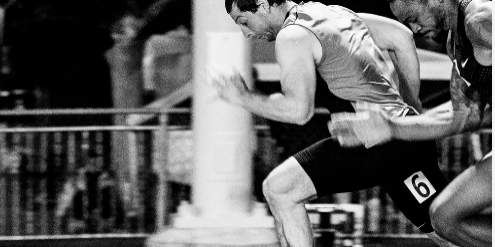ALTIS
ALTIS is an elite training environment for athletes, and a global leader of education in sport performance.
4 Simple Tests That Elevate Your Return-to-Performance Strategy
Over the past few years, Les Spellman has touched on Return to Performance from so many different angles - and let's be real, it's such a deep topic, promising to touch it all in an email would do it a major disservice. But today, we want to focus on one area Les and his team have refined over the years:...
Stuart McMillan on the Rich Roll Podcast: What Sprinting Can Teach Us About Movement, Leadership, and Systems Thinking
"It's not the 9.58 seconds that make sprinting what it is-it's everything packed inside them." That's how Stuart McMillan sees it. And after coaching over 70 Olympic athletes to more than 30 Olympic medals, and decades spent consulting across global sport, he's earned the right to say so. Following a widely shared conversation with Andrew Huberman, McMillan joined the Rich...
Strength Meets Skill: Lessons from Javier Miller-Estrada
Javier Miller-Estrada is a movement specialist, coach educator, and co-founder of Ignite Performance. He's worked with hundreds of youth athletes and emerging professionals, and his influence continues to grow through his work with Emergence and the Adaptable Athlete Podcast. His focus? Helping athletes become more adaptable, resilient movers-not just in the gym, but where it matters most: in sport. In...
“We Don’t Coach Outputs”: What Coaches Miss About Speed
"We Don't Coach Outputs": What Coaches Miss About Speed Stu McMillan recently joined Dr. Andrew Huberman on the Huberman Lab Podcast - a platform that reaches millions of curious minds across neuroscience, performance, and human behavior. In the conversation, Stu brought a coaching perspective that's rarely heard at that scale: one rooted in movement, not mechanics. In relationships, not recipes....
Between the Lines: Lessons from a Conversation Worth Having
Every week at ALTIS, we share three high-value emails designed to challenge, inform, and support coaches at every level. Between the Lines-written by Dan Pfaff-is one of them. Each edition is a straight-talking reflection drawn from decades of coaching at the highest levels, and shaped by Dan's ongoing conversations with coaches around the world. This week, Dan builds on a...
Coaching Isn’t About You — It’s About Them: Lessons from Loren Landow
ALTIS Speed Summit Podcast #3 - Featuring Loren Landow With a career spanning private training, the NFL, and now collegiate football at Notre Dame, Loren Landow has quietly become one of the most respected minds in sport performance. In the third episode of the ALTIS Speed Summit Podcast, hosted by Stu McMillan, Landow opens up about the evolution of his...
An Introduction to Embodied Coaching
Foreword In November 2019 I was reminded of what I've come to believe as a coach: there's an entire dimension beneath the metrics we obsess over. This is the essence of "embodied coaching," an approach that values the interconnection of mind, body, and emotion in every athletic pursuit. Over the course of this series, I'll introduce you to the foundations...
The Coach as Architect: 8 Themes That Build Success
In July, we launched the How We Move newsletter with a simple idea: to go deeper into "how we move." Each week, we've explored themes that shape the way we think about movement, coaching, and performance. From biomechanics and variability to systems thinking and sprint mechanics, the goal has been to challenge ourselves, refine our craft, and connect purpose to...
Streamlining Warm-Ups for Faster Acceleration
In last week's article I shared how I use the hip extension [or "knees behind butt"] pattern to structure my daily training sessions. The theme of that session was "initial acceleration"-the first 4-6 steps of the run-and the objective was to "project the center of mass as far and as fast as possible in a horizontal direction." Throughout the entire...
How to Coach Hip Extension for Speed
This week, I'm going to continue from where I left off in my last article, and write about how I apply the "knees behind butt" concept in practice-specifically, how does this pattern impact my coaching? First, let's look at how I structure each session. I organize it into six components: theme, objective, pattern, strategies, details, and any additional notes or...









